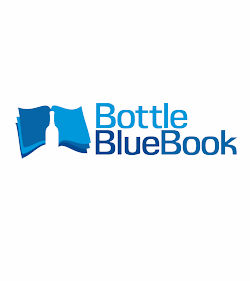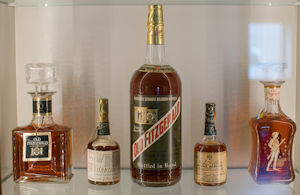Bourbon is considered thoroughly American. Legally, according to a congressional act in 1964, it is "a distinctive product of the United States." And in other folks' estimation, it is simply called, "America's spirit." That moniker all but guarantees the fact that it has a wild and rich history that correlates with that of the U.S. Although by definition, to be considered a bourbon, a whiskey must have at least 51% corn in its grain makeup, and must be aged in new, charred White Oak barrels. Aside from that, there is no criteria specifying the distilling location—it does not, contrary to popular belief, need to be made in Kentucky despite its close relationship with the state. Regardless, the spirit has an intangible relationship with the United States. The spirit goes as far back as the earliest colonial days. George Washington would dole some of it out to reward his troops. General Ulysses S. Grant was known to sip bourbon in the Civil War years. The list of famous bourbon drinkers goes on, from William Faulkner to Hillary Clinton. But what's even more incredible is considering the fact that a wealthy socialite drinking a Manhattan at a fancy midtown bar today, has something in common with an infantryman of the Continental Army. Indeed, when contemplating both the beverage and country, it's hard to think of one without the other. And perhaps no era in this country's history has been more crucial to bourbon's production and longevity as the Prohibition years.
The country was still reeling, in the aftermath of the horrific Great War. There was industrialization, modernizing factories and malaise, especially amongst the denizens of big cities. The automotive industry was just getting started. The drunkenness of the populace was absolutely rampant, and along with that came crime, accidental and untimely deaths, and an inculcation of resentment from within the teetotalling community. Temperance movements were launched and gained widespread traction.
The 18th amendment, otherwise known as the Volstead Act, was a long time in the making, and spurred acrid debates among the American public leading up to, and long after, its passage. One of the key casualties was of course the outlawing of the production and sale and consumption of bourbon, as by January of 1920, there were millions of gallons of the stuff just sitting in barrels that were under lock and key by the federal government. While bourbon distilleries, the majority of which were in Kentucky, Ohio, and Pennsylvania at this time, were closing for good, the future of this type of potent potable (and specifically bourbon; because rum, scotch, vodka, gin, brandy, beer and wine, could all be procured from other parts of the world) was in jeopardy. As anyone who has seen a film about the American 1920's or Boardwalk Empire knows, Americans did not stop drinking. There arose lucrative organized crime involving bootlegging. Concurrently a lopsided, flawed, but ultimately effective effort amongst distillery owners, public officials and medical professionals was waged to keep the "Good creature of God" a legal commodity. A crucial loophole in the Volstead Act was discovered, in that alcohol could be legally bought and consumed if it was for medicinal purposes. The ill-of-health and bourbon-heads alike rejoiced.
One particularly fascinating figure in this history was George Remus. Remus, a defense lawyer (who notably pioneered the temporary insanity plea) with a background in pharmacology, pounced on the medicinal loophole, buying up numerous distilleries in Kentucky and Ohio. Having secured a permit to produce and sell medicinal whiskey, he relocated to the region and opened or reopened distilleries that would have otherwise laid dormant forever. At one point in the 1920's, George Remus was worth over $6 million (roughly $78 million today) and had over 3,000 employees.
Remus' unique contribution to all of this was his implementation of legal and illegal business practices. He had the ability to sell and distribute whiskey to pharmacies—mostly in the northeast and the Midwest—thereby keeping this pocket of the bourbon production industry alive and well, and perhaps thriving. He also found another way to profit. As the shipments of bourbon went off to various cities, Remus staged "robberies." He hired men to hijack the shipments of those distillery's output, only to turn around and sell it to bootleggers and speakeasies at an extremely high price. His story—as it pertained to his illegal activities—took a turn for the worse when he was investigated and brought to trial on charges of illegal bootlegging. Remus was convicted and sentenced to a term of two years in a federal penitentiary in Georgia (one of the "bone dry" states, incidentally, in which empty kegs or bottles, or even a literal whiff of alcohol, was arrestable evidence). While in prison, Remus confided to a fellow inmate that his wife had control of the distilleries, therefore his money. That fellow inmate, who was an undercover federal agent collecting and reporting upon the information he picked up in the pen, ended up, once released, wooing and winning Remus's (now incredibly rich) wife and taking over the fortune Remus had amassed at the outset of Prohibition. George Remus, for his part, was subsequently released from prison and swiftly set upon an act of revenge, which took the form of gunning his wife down in broad daylight in a Cincinnati park (his plea at the trial: temporary insanity…)
Although George Remus may be seen as a dishonest, racketeering, bootlegging, murdering scumbag to some, he virtually singlehandedly ensured that bourbon would remain an entity by keeping alive those distilleries for medicinal purposes. Because of his exploited loophole, which subsequently brought him wealth, imprisonment, and then impending imprisonment and acquittal, he salvaged the industry. Six companies applied for and were approved of licenses to sell whiskey for medicinal purposes (three of which would be owned by Remus): Schenley Distilleries, Frankfort Distillery, Brown-Forman Distillery, James Thompson and Brother, Ph. Stitzel Distillery, and last but not least, American Medicinal Spirits. American Medicinal Spirits would later go on to become National Distillers, and produced some brand names of bourbon that are still seen today—namely the, 'olds.' Old Crow, Old Forester, Old Grand-dad, and Old Taylor—and would further bear the name of Jim Beam. And those other surviving distilleries would go on to become the very buildings and spaces operated by many modern-day brands: Heaven Hill, Maker's Mark, Buffalo Trace, and Woodford Reserve.
As the 1920's were coming to a rather dispiriting close (no pun intended), the once mighty public support for Prohibition had waned. It was evident that people would find a way to drink regardless of the law, and the extreme rise in organized crime was an obvious detriment to American society. Elected officials were more vocal about repealing the law—notably president Herbert Hoover, and future president Franklin D. Roosevelt. In addition to the lack of support were the much more urgent economic issues, as the end of the decade marked the dawn of the Great Depression. In 1933, keeping his campaign promise, FDR sought the repeal of Prohibition, and finally, the 21st Amendment was passed. Bourbon enthusiasts could openly rejoice again.
While the Prohibition years may have seen some of the most strange and colorful episodes in the story of bourbon, the following decades were nonetheless just as crucial to its survival. Whiskey production in the 1940's came to a near (no pun intended) standstill in the U.S. due to grain rationing for World War II. Fearing history was about to repeat itself a decade later at the outset of the Korean War, the owner of Schenley Industries, Lewis Rosenstiel, ordered as many barrels of bourbon as could possibly be produced. The war then ended (without grain rationing really happening at all) and Rosenstiel found himself with a large surplus of bourbon, without a matching public demand for his product. He then successfully lobbied congress to create a declarative measure so as to increase its popularity (and his wealth). Thus, bourbon's official title of being a, "distinctive product of the United States," and subsequently, "America's Spirit." So on the fourth of July, the most American thing one can do may very well be to raise a glass of the good creature, and toast to bourbon's history and future.


